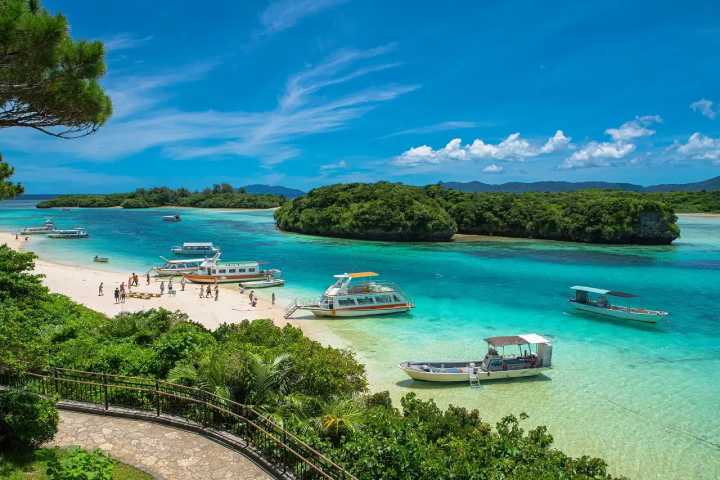In the pursuit of unraveling the secrets to a long and vibrant life, researchers have long been captivated by the phenomenon known as the “Blue Zones.” These rare and far-flung regions of the world are renowned for their unusually high concentrations of centenarians and low rates of chronic diseases. From the shores of Okinawa to the rugged hills of Sardinia, each Blue Zone offers a unique glimpse into the interplay between lifestyle, genetics, and longevity.
Statistics from the World Health Organization (WHO) underscore the urgency of addressing the global health crisis. According to WHO, non-communicable diseases (NCDs) account for an estimated 71% of all deaths worldwide, with cardiovascular diseases, cancer, respiratory diseases, and diabetes ranking among the leading causes. Moreover, the prevalence of obesity has nearly tripled since 1975, with over 650 million adults classified as obese in 2016. Against this backdrop of mounting health challenges, the emergence of Blue Zones offers a glimmer of hope and a roadmap for cultivating environments that foster longevity and vitality.
Global Blue Zones
Nestled in the sapphire waters of the East China Sea, Okinawa boasts one of the highest life expectancies on the planet. With an average lifespan surpassing 90 years, the inhabitants of this Japanese archipelago have long been revered for their vitality and vigour well into old age. What sets Okinawans apart is not just their genetic makeup but also their time-honored traditions and dietary habits.
The Okinawan diet, characterized by an abundance of fresh vegetables, tofu, sweet potatoes, and fish rich in omega-3 fatty acids, is credited with fueling longevity and staving off age-related ailments. Physical activity is deeply ingrained in Okinawan culture, with daily routines that include tai chi, gardening, and communal gatherings that foster social connections, a key ingredient in the recipe for a long and fulfilling life.
“The Okinawan diet is not a fad or a quick fix; it’s a way of life that has sustained generations of islanders and offers valuable lessons on how to age with grace and vitality,” emphasized Dr. Makoto Suzuki, Co-Founder of the Okinawa Centenarian Study.
With a remarkable concentration of centenarians, Sardinia has earned its place as one of the world’s most celebrated Blue Zones. But what sustains the vitality of its inhabitants?
The Sardinian diet, steeped in tradition and simplicity, revolves around locally sourced ingredients such as whole grains, legumes, fresh fruits, and vegetables, complemented by moderate consumption of goat’s milk and cheese. Strong familial ties and a sense of purpose infuse daily life with meaning, while a close-knit community fosters a sense of belonging and support.
“In Sardinia, it’s not just about what you eat, but how you eat. Meals are shared with family and friends, creating a sense of connection and well-being that nourishes both body and soul,” outlined Dr. Giovanni Pes, Cardiologist and Blue Zones Expert.
In southern California, Loma Linda stands out as an unexpected haven of longevity in the Western world. Home to a community of Seventh-day Adventists, Loma Linda residents boast a life expectancy that exceeds the national average by nearly a decade. What fuels their exceptional health and vitality?
A plant-based diet rich in legumes, nuts, fruits, and vegetables forms the cornerstone of the Adventist lifestyle, complemented by regular exercise and a strong emphasis on spiritual well-being. The Sabbath, observed from sundown Friday to sundown Saturday, provides a weekly respite from the stresses of modern life, promoting relaxation and rejuvenation.
In the tranquil waters of the Aegean Sea, lies the idyllic island of Ikaria, where time seems to slow down and age is but a number. With a disproportionate number of octogenarians and nonagenarians, Ikaria has captured the imagination of researchers seeking to unlock the secrets of longevity.
The Ikarian diet, characterized by an abundance of fresh vegetables, legumes, olive oil, and herbal teas, is complemented by regular physical activity and a laid-back lifestyle that prioritizes leisure over haste. Strong social bonds and a deep connection to nature foster a sense of well-being and contentment, ensuring that the residents of Ikaria age gracefully and with gusto.
Contrasting Blue Zones with Cosmopolitan Metropolises
In the pursuit of unraveling the enigma of longevity, the Blue Zones stand as beacons of health and vitality, contrasting sharply with the frenetic pace and urban sprawl of cosmopolitan cities like London, New York, and Shanghai. While these metropolises pulsate with energy and opportunity, they also present a unique set of challenges to quality of life and well-being.
Research consistently highlights the detrimental effects of urban living on health and longevity. A study published in The Lancet found that residents of major cities face higher risks of chronic diseases such as obesity, diabetes, and cardiovascular ailments compared to their rural counterparts. The sedentary lifestyle prevalent in urban centers, coupled with the proliferation of fast food and processed snacks, undermines efforts to maintain a healthy diet and lifestyle.
Moreover, the relentless hustle and bustle of city life exacts a toll on mental well-being, with high levels of stress, anxiety, and burnout prevalent among urban dwellers. A report by the World Health Organization (WHO) identified urbanization as a major driver of mental health disorders, citing factors such as social isolation, noise pollution, and overcrowding as contributing factors.
In stark contrast, the Blue Zones offer a sanctuary of serenity and simplicity, where time-honored traditions and close-knit communities foster a sense of belonging and purpose. Studies have consistently demonstrated the positive impact of social connections on health and longevity, with strong familial ties and communal support networks prevalent in Blue Zone communities.
The Okinawan concept of “moai,” or a group of lifelong friends who support each other through thick and thin, exemplifies the power of social cohesion in promoting well-being. Similarly, the close-knit communities of Sardinia and Ikaria provide a buffer against the stresses of modern life, with residents enjoying lower rates of chronic diseases and higher levels of life satisfaction.
Furthermore, the emphasis on physical activity and outdoor pursuits in the Blue Zones stands in stark contrast to the sedentary lifestyle prevalent in many urban centres.
Is it Possible to Create Blue Zones in an Urban Environment?
The quest to replicate the longevity and vitality of Blue Zones within the confines of urban environments has sparked a wave of innovative initiatives aimed at reimagining city living through the lens of health, sustainability, and community.
“The secret of the Blue Zones is the recognition that health and longevity are deeply intertwined with community, purpose, and a sense of belonging,” added Dan Buettner, National Geographic Fellow and Blue Zones Founder.
While the dense, fast-paced nature of urban centres presents unique challenges, visionary projects such as Saudi Vision 2030, the Copenhagen 2025 Climate Plan, the Singapore Green Plan 2030, Seoul Vision 2030 and other eco-tech initiatives offer a glimmer of hope for creating Blue Zones within city limits.
Saudi Vision 2030, a sweeping blueprint for economic diversification and social reform, places a strong emphasis on improving quality of life and well-being for its citizens. Central to this vision is the development of vibrant, sustainable urban hubs designed to promote health, happiness, and longevity. Initiatives such as NEOM, a futuristic city being built from scratch along the Red Sea coast, embody this commitment to holistic urban planning.
Copenhagen aims to become the world’s first carbon-neutral capital by 2025, with a focus on promoting sustainable transportation, green energy, and urban planning. By prioritizing pedestrian and cycling infrastructure, the city encourages physical activity and reduces air pollution, contributing to improved public health and well-being.
“Copenhagen’s commitment to sustainability and livability is not just about reducing carbon emissions; it’s about creating a city where people can thrive, both physically and mentally, for generations to come,” said Mayor Frank Jensen, Copenhagen, Denmark.
Singapore’s Green Plan 2030 sets ambitious targets for sustainability and environmental conservation, including reducing the city-state’s carbon emissions and enhancing green spaces. By integrating nature into the urban landscape and promoting active lifestyles, Singapore aims to create a healthier and more livable environment for its residents.
Amsterdam’s Circular Strategy 2050 focuses on transitioning to a circular economy, where resources are reused, recycled, and repurposed to minimize waste and environmental impact. By promoting sustainable consumption and production patterns, the city aims to create a more resilient and equitable urban environment for future generations.
Seoul’s Vision 2030 emphasizes the importance of fostering a sustainable and inclusive city for its residents. Through initiatives such as the Seoul Forest and the Cheonggyecheon Restoration Project, the city has transformed disused urban spaces into vibrant green corridors, promoting biodiversity and enhancing quality of life.
“Seoul’s transformation into a greener and more sustainable city is not just about aesthetics; it’s about improving public health, fostering biodiversity, and creating spaces where people can connect with nature and each other,” commented Professor Koh Dong-jin, Seoul National University.
London’s Environment Strategy sets out a comprehensive plan to tackle air pollution, improve green spaces, and promote sustainable transport options. By prioritizing the health and well-being of its citizens, London aims to create a cleaner, greener, and more resilient city for generations to come.
“London’s environment strategy is not just about protecting the planet; it’s about ensuring that all Londoners have access to clean air, green spaces, and healthy, sustainable lifestyles,” emphasised Sadiq Khan, Mayor of London.
Several tech companies are at the forefront of advancing the global Blue Zone phenomenon, particularly in the domains of infrastructure and eco-urbanization. Alphabet Inc.’s subsidiary, Sidewalk Labs, leads initiatives to develop smart cities with integrated technologies aimed at enhancing transportation, energy efficiency, and environmental monitoring. Similarly, Sustainable Energy for All (SEforALL) collaborates with tech firms to innovate renewable energy solutions and expand energy access in both urban and rural areas.
Multinational corporations like Schneider Electric and Siemens AG provide cutting-edge technology for energy management, smart mobility, and sustainable urban development, fostering resilience and sustainability in cities worldwide. Additionally, IBM leverages advanced analytics and AI to optimize urban planning and resource management, while Cisco Systems offers networking and IoT solutions for data-driven decision-making and automation across various urban sectors. Moreover, companies like Bosch contribute to eco-friendly living and urban mobility with products ranging from energy-efficient appliances to smart home systems and electric mobility solutions.
The Future of Blue Zones
The future of Blue Zones presents a complex landscape, with questions arising about accessibility, global reach, cost implications, cultural preservation, and unintended health consequences. One pressing concern is whether Blue Zones will become exclusive enclaves accessible only to the super-rich. While some initiatives may cater to affluent communities, there are also efforts to make Blue Zone principles more widely accessible. For example, the “Blue Zones Project” in the United States aims to implement Blue Zone-inspired strategies in communities across the country, regardless of socioeconomic status. Research published in the journal “Preventive Medicine” highlights the potential for Blue Zone interventions to reduce health disparities and improve well-being among diverse populations.
In terms of global expansion, the concept of Blue Zones is gaining traction beyond traditional regions like Okinawa and Sardinia. For instance, the Indian state of Kerala has been identified as a potential Blue Zone due to its high life expectancy and low rates of chronic disease. Furthermore, initiatives such as the Blue Zones Criteria™ program seeks to recognize communities worldwide that adopt Blue Zone principles. However, implementing Blue Zone strategies on a global scale comes with significant costs. According to research by GlobalData, the market for smart city technologies, which often underpin sustainable urban development initiatives, is projected to reach $263 billion by 2025. These costs encompass infrastructure investments, technology deployment, and community engagement efforts, posing challenges for widespread adoption.
Concerns about cultural preservation arise as Blue Zone initiatives intersect with urban development and globalization. While promoting healthier lifestyles, there’s a risk of homogenizing cultural diversity and eroding traditional practices that contribute to community well-being. For instance, a study published in the journal “Frontiers in Public Health” explored the tension between preserving cultural heritage and implementing health interventions in indigenous communities.
Lastly, the pursuit of forced health zones or overly prescriptive approaches to wellness could lead to unintended health consequences. As seen during the COVID-19 pandemic, strict lockdown measures aimed at curbing transmission contributed to increased mental health issues, social isolation, and economic disparities. Case studies from countries like New Zealand, which implemented stringent lockdowns to contain the virus, highlight the importance of considering broader health and social implications when implementing public health measures.
Challenges to Blue Zone Implementation
The modern health landscape, characterised by trends like the “deep-fry everything” mentality, the pursuit of the “social media body,” fad diets like the “Tim Noakes Diet,” and the culture of “sweet treat celebration,” reflects the age-old adage: “You can lead a horse to water, but you can’t make it drink.” This sentiment rings true as societal norms and individual choices often diverge from what is considered optimal for health and well-being. Additionally, extreme challenges like “I challenge you to run 100 Km across Africa” highlight the complexities of motivating behavior change in an environment saturated with conflicting messages and temptations. While the concept of Blue Zones offers valuable insights into healthy living, there are several arguments against its relevance in today’s world where sedentary lifestyles are prevalent.
Firstly, the traditional lifestyle factors that contribute to the longevity of Blue Zone populations may not be easily replicable or applicable to modern urban environments. The dietary habits, social structures, and physical activities that characterize Blue Zones are often deeply rooted in cultural traditions and geographical settings that may not translate effectively to urbanized, industrialized societies. Attempting to transplant these practices without consideration for cultural context and individual preferences could lead to resistance and ineffectiveness.
Additionally, the rapid pace of technological advancement and urbanization has fundamentally altered the way people live, work, and interact with their environments. With the proliferation of sedentary occupations, reliance on processed foods, and social disconnection exacerbated by digital technologies, the barriers to adopting Blue Zone lifestyles have become more formidable. In such a landscape, promoting behavior change and community engagement on a scale necessary to create Blue Zones may prove challenging and unrealistic.
Furthermore, the economic costs associated with implementing Blue Zone initiatives on a large scale could be prohibitive, particularly in low- and middle-income countries where resources are already constrained. The infrastructure investments, policy reforms, and community outreach efforts required to foster healthy environments and social cohesion may not be feasible or sustainable without significant financial support and political will.
Moreover, the focus on individual behavior change inherent in Blue Zone interventions may overlook broader structural determinants of health and well-being, such as socioeconomic inequalities, environmental degradation, and systemic barriers to access healthcare and education. Addressing these systemic issues requires multifaceted approaches that go beyond lifestyle modifications and community-based interventions.
While the concept of Blue Zones may not offer an all-encompassing solution to modern health, it serves as a powerful reminder of the importance of holistic approaches to health and well-being. By drawing inspiration from Blue Zone principles, while acknowledging the complexities of modern life, individuals and entities can chart a course towards a healthier, more sustainable future for generations to come.






